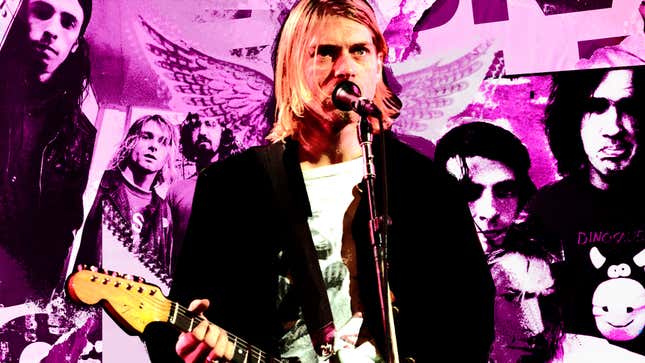
Thirty years ago, Nirvana’s final act began with the September 1993 release of In Utero. Recorded with Steve Albini—the engineer behind Pixies’ Surfer Rosa—In Utero sounded as vital and twitchy as an exposed nerve: the trio of Kurt Cobain, Krist Novoselic, and Dave Grohl dedicated themselves to creating an unvarnished counterweight to the polished roar of Nevermind.
In Utero leapt out of the speakers: it didn’t sound like a final record, it sounded like the next chapter in a long career (for further proof, witness Robert Christgau’s contemporaneous review of the album, which suggests it was merely one in a long line of excellent Nirvana LPs). It wound up being the last studio album they’d release during Cobain’s lifetime. Over the years, there have been many posthumous reissues—another is coming next month, when In Utero gets its third expanded edition—but the 30th anniversary of its initial release provides an excellent opportunity to revisit Nirvana’s core catalog. Their 30 essential songs retain their essential power three decades later: they still sound as raw, vital, and alive as they did when they first were released.